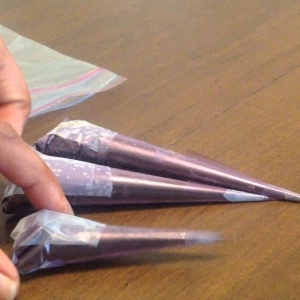Introduction: Why Surgical Instruments Matter in Plastic Surgery
Plastic surgery is more than just aesthetics; it's a blend of art and science that restores, reshapes, and enhances the human body. Behind every successful procedure lies a set of finely crafted tools known as plastic surgical instruments. These instruments aren’t just pieces of metal; they represent precision, safety, and innovation in medicine.
In this comprehensive guide, we’ll explore the history, types, materials, manufacturers, sterilization techniques, and future trends of surgical instruments. By the end, you’ll understand why the choice of instruments can make the difference between a good surgical outcome and an exceptional one.
History and Evolution of Surgical Instruments
From Ancient Civilizations to Modern Medicine
The journey of surgical instruments spans thousands of years. Ancient Egyptians used sharpened stones and bronze knives, while Greek physicians like Hippocrates documented early surgical tools. Over time, advancements in metallurgy, anatomy, and medical knowledge refined these rudimentary devices into specialized instruments.
The Breakthrough of Stainless Steel
The introduction of stainless steel surgical instruments in the early 20th century was a turning point. Its resistance to rust, corrosion, and wear made it ideal for sterilization and repeated use. Today, stainless steel remains the backbone of surgical tool manufacturing, although newer materials like titanium and polymer-coated instruments are gaining popularity.
Types of Plastic Surgical Instruments
Plastic surgery requires instruments that provide accuracy, delicacy, and control. While some overlap with general surgery instruments, many are uniquely designed for reconstructive and cosmetic procedures.
1. Cutting Instruments
- Scalpels – For sharp, clean incisions.
- Surgical Scissors – Fine-tipped scissors for delicate tissue dissection.
2. Grasping and Holding Instruments
- Forceps – Used for holding, stabilizing, or manipulating tissue.
- Clamps – Useful in controlling bleeding during reconstructive surgery.
3. Retractors and Separators
- Handheld retractors – Allow surgeons to expose deeper tissues.
- Self-retaining retractors – Free up the surgeon’s hands during lengthy procedures.
4. Suturing and Stapling Instruments
- Needle holders – For precise suturing.
- Skin staplers – Used in large reconstructive operations.
5. Specialized Plastic Surgery Instruments
- Dermatomes – Harvest thin layers of skin for grafting.
- Liposuction cannulas – Used in cosmetic fat removal.
- Microsurgical tools – For reconstructive procedures involving nerves and blood vessels.
Materials Used in Surgical Instrument Manufacturing
Stainless Steel
The most common material due to its durability, ease of sterilization, and cost-effectiveness.
Titanium
Lighter and stronger than stainless steel, titanium instruments are especially useful in microsurgery. They’re also non-magnetic and biocompatible.
Single-use vs. Reusable Instruments
- Single-use: Sterile and disposable, reducing infection risk.
- Reusable: More cost-effective but require strict sterilization protocols.
Role of Surgical Instruments Manufacturers
Ensuring Quality and Safety
A reliable surgical instruments manufacturer follows strict international standards (ISO, CE certification). These standards guarantee that instruments meet safety and precision requirements.
Global Leaders in Manufacturing
Countries like Germany and Pakistan are renowned for producing high-quality instruments. Leading surgical instruments suppliers export to hospitals and clinics worldwide.
Innovations in Manufacturing
Recent advancements include laser-cutting technology, robotic precision assembly, and anti-bacterial coatings to minimize post-surgical infections.
General Surgery Instruments vs. Plastic Surgery Instruments
Key Differences
- General surgery instruments: Designed for broader applications like abdominal or orthopedic procedures.
- Plastic surgery instruments: Fine-tuned for cosmetic and reconstructive precision.
Areas of Overlap
Basic tools such as scalpels, scissors, and forceps are used in both general and plastic surgery, though specialized instruments differ significantly.
Sterilization and Maintenance of Surgical Instruments
Why Sterilization Matters
Unsterilized instruments can lead to infections, prolonged healing, and even surgical failure.
Best Practices
- Autoclaving – Steam sterilization is the most reliable method.
- Chemical Sterilization – Effective for heat-sensitive tools.
- Ultrasonic Cleaning – Removes debris from hard-to-reach areas.
Proper Handling and Storage
Instruments should be stored in sterilized trays and inspected regularly for wear and tear.
Choosing the Right Surgical Instruments Supplier
Factors to Consider
- Certification (ISO, CE, FDA-approved)
- Material quality (preferably stainless steel or titanium)
- After-sales support and warranty
Case Example
A renowned plastic surgical instruments manufacturer in Germany supplies tools to leading hospitals worldwide, ensuring consistent quality through rigorous testing.
The Impact of Technology on Surgical Instruments
Robotic-Assisted Tools
Robotic arms equipped with precision surgical instruments now assist in complex reconstructive surgeries.
Smart Instruments
Some tools are embedded with sensors to provide real-time feedback on tissue tension and pressure.
Future Trends
- AI-guided surgery
- 3D-printed customized instruments
- Instruments with antimicrobial surfaces
Advantages and Disadvantages of Plastic Surgical Instruments
Advantages
- Precision in cosmetic and reconstructive work
- Durability of stainless steel instruments
- Enhanced patient safety with modern innovations
Disadvantages
- High cost of titanium and specialized instruments
- Requirement of meticulous sterilization
- Learning curve for surgeons adapting to new technologies
Case Studies & Real-Life Examples
Reconstructive Surgery
Plastic surgeons often rely on microsurgical instruments for nerve and vessel repair after trauma. These tools enable patients to regain functionality and appearance.
Cosmetic Enhancements
Instruments like liposuction cannulas and dermatomes have transformed aesthetic procedures, offering less invasive options and faster recovery times.
FAQs on Plastic Surgical Instruments
- What makes stainless steel surgical instruments durable?
Their corrosion resistance, strength, and ability to withstand repeated sterilization. - How often should plastic surgical instruments be replaced?
With proper care, high-quality reusable instruments can last several years. However, they must be inspected regularly for wear. - Are reusable or single-use instruments better?
Reusable instruments are cost-effective, but single-use ones reduce the risk of infection. The choice depends on the procedure and hospital protocol. - Which companies are the top surgical instruments manufacturers?
Germany and Pakistan host leading global manufacturers known for precision and quality. - How are surgical instruments sterilized?
Most are sterilized via autoclaving, chemical disinfection, or ultrasonic cleaning. - What are the risks of using low-quality instruments?
Poorly manufactured tools can lead to surgical errors, infections, and compromised outcomes.
Conclusion & Call to Action
Plastic surgical instruments are the backbone of safe and effective plastic surgery. From scalpels and forceps to dermatomes and microsurgical tools, each instrument plays a critical role in enhancing patient outcomes. Choosing the right surgical instruments manufacturer and maintaining strict sterilization protocols ensures both surgeon confidence and patient safety.






